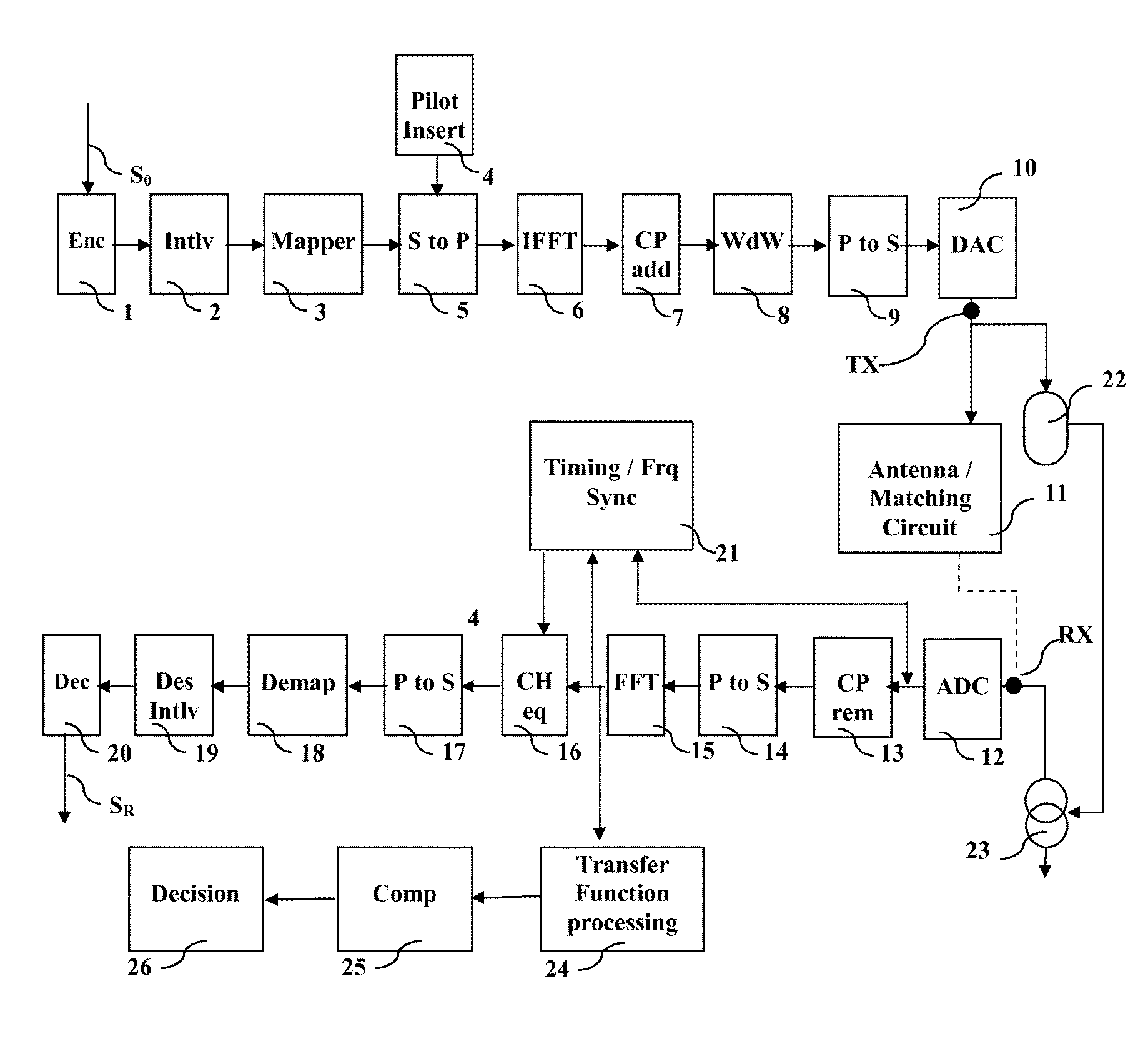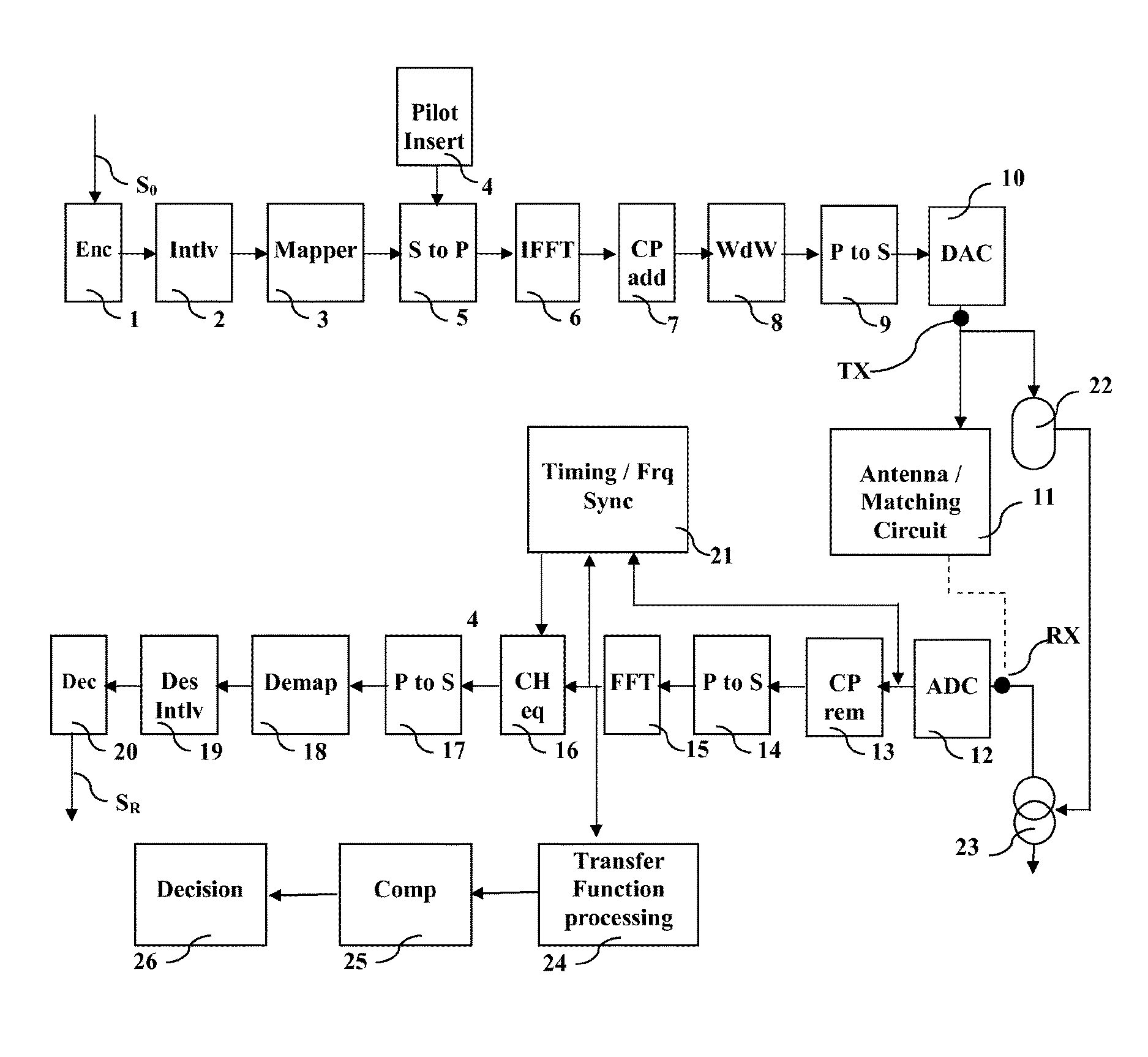Built-in self-test technique for detection of imperfectly connected antenna in OFDM transceivers
a technology of transceivers and self-testing, which is applied in the direction of transmitter monitoring, orthogonal multiplex, instruments, etc., can solve the problems of low network coverage, low signal strength, and difficult detection even by end users
- Summary
- Abstract
- Description
- Claims
- Application Information
AI Technical Summary
Benefits of technology
Problems solved by technology
Method used
Image
Examples
Embodiment Construction
[0042]The invention consists in testing the presence (or good connection) of the antenna circuit from a different point of view than the existing techniques. The self-test is performed by measuring on-chip the quality factor and / or the resonance frequency of the antenna circuit, rather than testing the impedance, the frequency offset and / or the signal strength like the prior art solutions.
[0043]As it has been said, with non-soldered contacts, the impedance, the power etc. are not good criteria for checking the quality of the contact.
[0044]On the opposite, the applicant has considered that a defective antenna spring contact detunes the resonance of the antenna circuit and / or changes its quality factor.
[0045]In addition:[0046]Detuning the resonance of the antenna circuit causes a nonlinear gain in the bandwidth of the received and transmitted signals. Under certain conditions (poor network), this drives the circuit to a faulty behavior without changing the overall gain of the signal.[...
PUM
 Login to View More
Login to View More Abstract
Description
Claims
Application Information
 Login to View More
Login to View More - R&D
- Intellectual Property
- Life Sciences
- Materials
- Tech Scout
- Unparalleled Data Quality
- Higher Quality Content
- 60% Fewer Hallucinations
Browse by: Latest US Patents, China's latest patents, Technical Efficacy Thesaurus, Application Domain, Technology Topic, Popular Technical Reports.
© 2025 PatSnap. All rights reserved.Legal|Privacy policy|Modern Slavery Act Transparency Statement|Sitemap|About US| Contact US: help@patsnap.com



